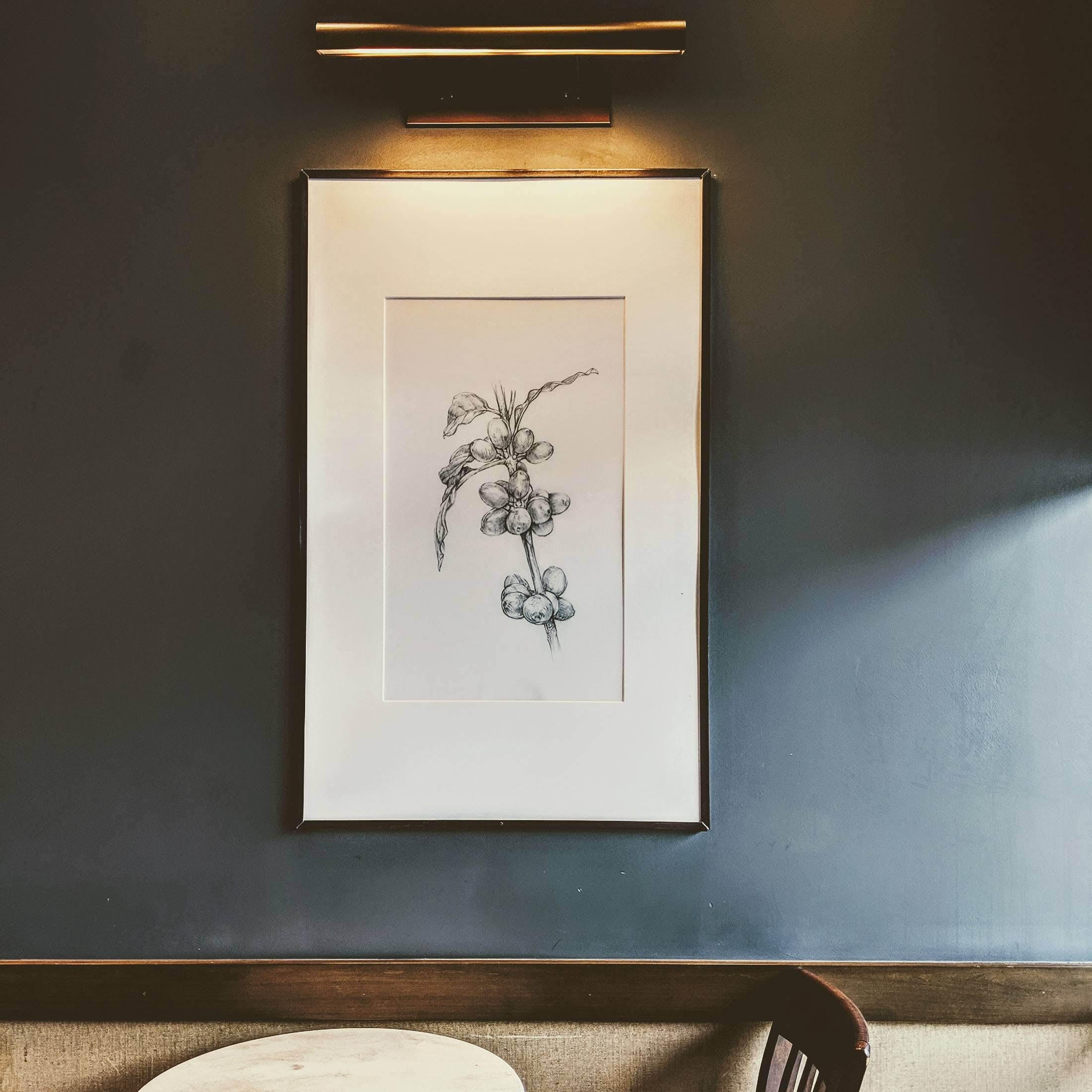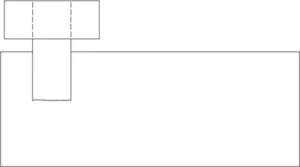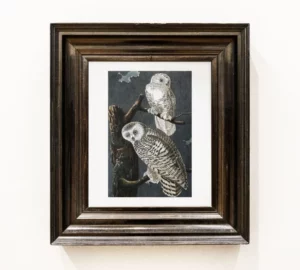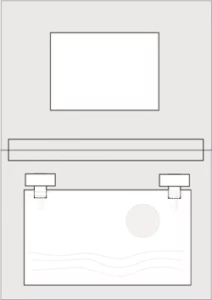Matting a picture frame in 5 steps
The use of a mat can have several reasons. Framing a photo with a mat puts a clear focus on the image. In combination with the right frame, you can create a real eye-catcher with your photo or artwork. In some cases, using a mat is not a question of aesthetics but of pure necessity because the glass cannot come into direct contact with the art. This is, for example, true for pastel or charcoal drawings. If you were to frame such art pieces without a mat, the glass could cause damage to them. Using a thick cardboard mat separates the artwork and glass. An additional advantage is that a mat regulates the moisture within the framing by absorbing it and thus protecting the art piece.
Which tape should I use?
To fix an art piece correctly behind a mat, you can use self-adhesive tapes. These tapes make sure that the picture stays neatly put behind the mat. The choice of tape depends on the artwork or photo to be framed. The weight and material of the piece determine which tape is best suited for it.
Regardless of which tape you choose, it is good to know that the following tapes have all passed the Photographic Activity Test (PAT) according to ISO 18916. They are, therefore, safe to use in combination with your artwork and photos and will not negatively affect them over time.

filmoplast® P
filmoplast® P is used to mount art prints and reproductions of very thin paper to a mat. The practical dispenser packaging, featuring a cutting knife, makes it very easy to handle. The adhesive does not need to be moistened. With its calcium carbonate-buffered adhesive, filmoplast® P offers a slightly alkaline environment, which provides excellent absorption of the acids released from the paper and thus prevents damage. Thanks to its very thin carrier material, filmoplast® P is almost invisible after application. The thin and transparent paper is best suited for smaller pieces of art.
filmoplast® P90
filmoplast® P90 is made of tear-resistant special paper and is therefore used to fix heavier artworks (art prints, reproductions, or originals) to a mat. There is no need to moisten the adhesive. Just like filmoplast® P, filmoplast® P 90 is not only acid-free, but also slightly alkaline to adapt to the aging process of paper.
filmoplast® P 90 plus
Thanks to its extra-high adhesive strength and strong tear resistance, filmoplast® P 90 Plus is excellent for attaching heavier images, photos, and prints to a mat or backing board and is also suited for dust-free sealing of backing boards. Just like its predecessors, filmoplast® P 90 is acid-free, white, and tear-resistant.
Matting a picture frame in 5 steps
Now that the choice of tape has been made, the mounting of the image behind the mat can begin.
1. Apply the filmoplast® -tape approx. 2.5 cm away from the edge and with 0.5 cm overlapping the top edge of the artwork or photo to be mounted. This is done on both the top left and top right edges.
2. Turn the medium so that the adhesive side of the tape points upward.
3. Place the medium in the middle onto the backing board behind the window of the mat and press firmly.
4. Open the mat again and secure it with another strip of filmoplast® P, P90 or P 90 Plus over the existing strip on the backing board. This will create a so-called T-hinge.
5. Press the two T-hinges firmly. The image is now attached behind the mat.

Applying the mat on the backing board
filmoplast® SH is used to create the so-called “hinge”. The hinge refers to the connection between the backing board and the mat, which is created by a particularly flexible and elastic tape. filmoplast® SH is made of a textile fabric and, therefore, is very tear-resistant. Additionally, it is acid- free and environmentally friendly because it is biodegradable. The coated adhesive is free of solvents, acids, and phthalates, is resistant to aging, does not yellow, and is permanently elastic.
1. Place the mat’s top edge against the top edge of the backing board. Leave a gap of approx. 1 mm between the mat and the backing board.
2. Attach the two materials to the opening with a strip of filmoplast® SH or filmoplast® P 90 Plus to create the hinge. Note: the adhesive strip should be approx. 4 cm shorter than the mat.
For light- to medium weight-materials, we recommend the use of filmoplast® P 90 Plus. For particularly heavy and thick materials (e.g., a double mat), we recommend filmoplast® SH.
Sealing the frame with filmoplast® T
As a finishing touch, filmoplast® T is used for dust-proof sealing on the back of the frame, protecting the artwork from dirt and dust.
If you are interested in our self-adhesive tapes, please contact our customer service.
We are happy to assist you!


